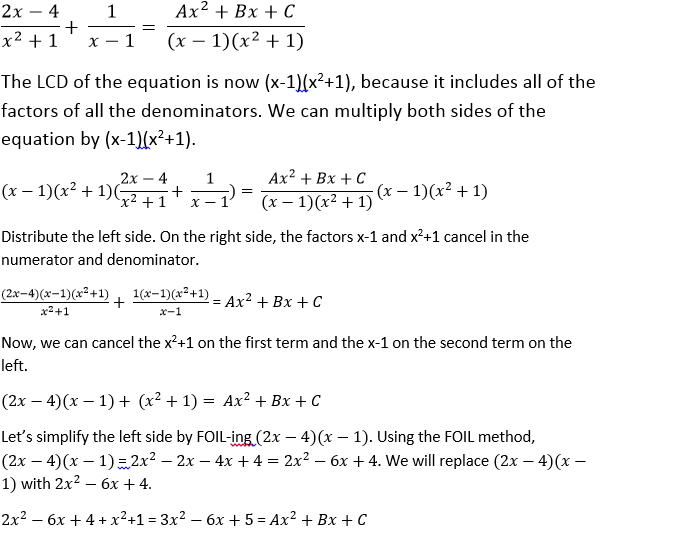All ACT Math Resources
Example Questions
Example Question #121 : How To Find The Solution To An Equation
A car averages 


To solve this problem you should divide the total number of miles 




Example Question #122 : How To Find The Solution To An Equation
When 


You must plug in 






Example Question #123 : How To Find The Solution To An Equation
What is the value of 

The first step is to subtract 





Example Question #124 : How To Find The Solution To An Equation
Karen has 



First, set up our two equations. If Karen has seven dollars more than three times as many dollars as Susan, then 




Example Question #121 : Equations / Inequalities
If the third day of the year is a Wednesday, what is the 165th day?
Monday
Thursday
Friday
Tuesday
Wednesday
Thursday
If the third day is a Wednesday, then the first day is a Monday. 23 weeks will complete a cycle with the 161st day. Therefore, the fourth day past that, 165, is a Thursday.
Example Question #1 : How To Find The Solution To A Rational Equation With Lcd
John, Jill, and Jack are splitting a pizza. John eats 

We can write an equation for the amount of pizza eaten, with 
To solve this equation, we must find the lowest common denominator of 



We can see that the least common multiple of 



When we put these fractions back into the equation, we can solve for 
Example Question #121 : Equations / Inequalities
What is the slope of a line represented by the equation:
To solve problems where you need to find the slope of a line in a given equation, change the equation so that it matches y-intercept form:
For this equation, first move the 3x over to the other side of the equation.

The equation should now look like this:
Then, divide by 15 to isolate the variable 
Then simplify
Whatever number is before the x in the equation (m) is your slope.
Example Question #1891 : Act Math
1
0
2
–1
–2
2
Example Question #1 : How To Find The Solution To A Rational Equation With Lcd
–b/(m + 1)
–bm/(m2 + 1)
bm/(m2 + 1)
b/(m2 + 1)
–b/(m2 – 1)
b/(m2 + 1)
Example Question #1892 : Act Math
In the equation below, 





All ACT Math Resources





































































